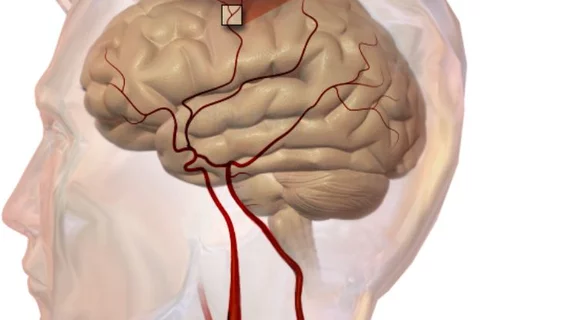Hospitals improve ‘door-to-needle’ time for acute stroke thrombolysis
Hospitals participating in a quality improvement program were 7.3 times more likely to administer IV alteplase within one hour of a stroke patient’s arrival in 2017 versus 2008, after adjusting for clinical and demographic variables, according to a study published Dec. 17 in Circulation: Cardiovascular Quality and Outcomes.
Timely administration of alteplase, a tissue plasminogen activator (tPA) designed to break up blood clots, has emerged as a key metric for acute ischemic stroke care. U.S. guidelines recommend IV alteplase in clinically eligible patients within 4.5 hours of stroke onset, and suggest hospitals initiate treatment within 60 minutes of a patient arriving at their facility. A 2014 initiative launched by the American Heart Association/American Stroke Association has even targeted door-to-needle times within 45 minutes in at least half of patients receiving tPA.
“A typical stroke patient loses nearly 2 million neurons or 1.8 days of healthy life for each minute delay in treatment,” Gregg C. Fonarow, MD, and Ying Xian, MD, PhD, pointed out in a related editorial. “Therefore, evidence supports and guidelines strongly recommend timely treatment and that every effort should be made to reduce delays in tPA administration.”
To assess how well hospitals are doing in this regard, Xin Tong, MPH, and colleagues studied more than 496,000 admissions for acute ischemic stroke in hospitals participating in the Paul Coverdell National Acute Stroke Program from 2008 to 2017.
From the beginning of the study to the end, the use of IV alteplase increased from 6.4 percent to 15.3 percent. In analyzing door-to-needle (DTN) times, the authors included only cases in which alteplase was given within 4.5 hours of symptom onset, leaving 39,737 cases at 419 hospitals.
Overall, the proportion of DTN times of an hour or less improved from 26.4 percent in 2008 to 66.2 percent in 2017. Likewise, the proportion of DTN times below 45 minutes jumped from 10.7 percent to 40.5 percent.
Tong et al. identified several factors that had an association with the odds of receiving timely tPA—or not—including:
- Older patients aged 55 to 84 were about 15 percent more likely to be treated within 60 minutes of hospital arrival compared to those in the 18- to 54-year-old range.
- Patients arriving to the hospital via emergency medical services were 49 percent more likely to receive tPA within 60 minutes and 46 percent more likely to be treated within 45 minutes compared to those arriving by other means.
- Individuals with more severe strokes—based on the National Institutes of Health Stroke Scale score—were up to 90 percent more likely to have timely tPA administration versus those with the mildest strokes (NIHSS score from 0 to 4).
- Women were 17 percent less likely to be treated within an hour.
- Blacks, compared to whites, were 14 percent less likely to be treated within an hour.
- A medical history of stroke, hypertension, diabetes, heart failure, coronary artery disease or atrial fibrillation were all associated with slower DTN times.
“In addition to the factors reported by others, we found patients with medical history of hypertension, or heart failure were also less likely to receive IV alteplase within DTN target goals, which might indicate clinically significant challenges in the care of patients with comorbidities,” Tong and colleagues wrote. “Our finding that achievement of the time targets were less likely among those aged 18 to 54 years could indicate challenges in diagnosing a stroke versus a stroke mimic in younger patients.”
A DTN time within 60 minutes was linked to 16 percent greater odds of being discharged home, 12 percent reduced odds of in-hospital death and 23 percent reduced risk of symptomatic intracerebral hemorrhage within 36 hours.
“Focusing on shortening DTN times through dedicated quality improvement activities has been successful, and has not been associated with an increase in serious adverse events related to thrombolysis,” the authors wrote. “However, opportunities exist to reduce the disparities in treatment, especially among women and blacks, and further improve acute stroke care and systems of care.”
In their editorial, Fonarow and Xian said the study was limited by its lack of a control group of hospitals that weren’t participating in the quality improvement initiative. Also, it was difficult to tease out which targeted interventions at these hospitals were most successful in reducing DTN times, which could be informative for implementing best practices at other facilities.

